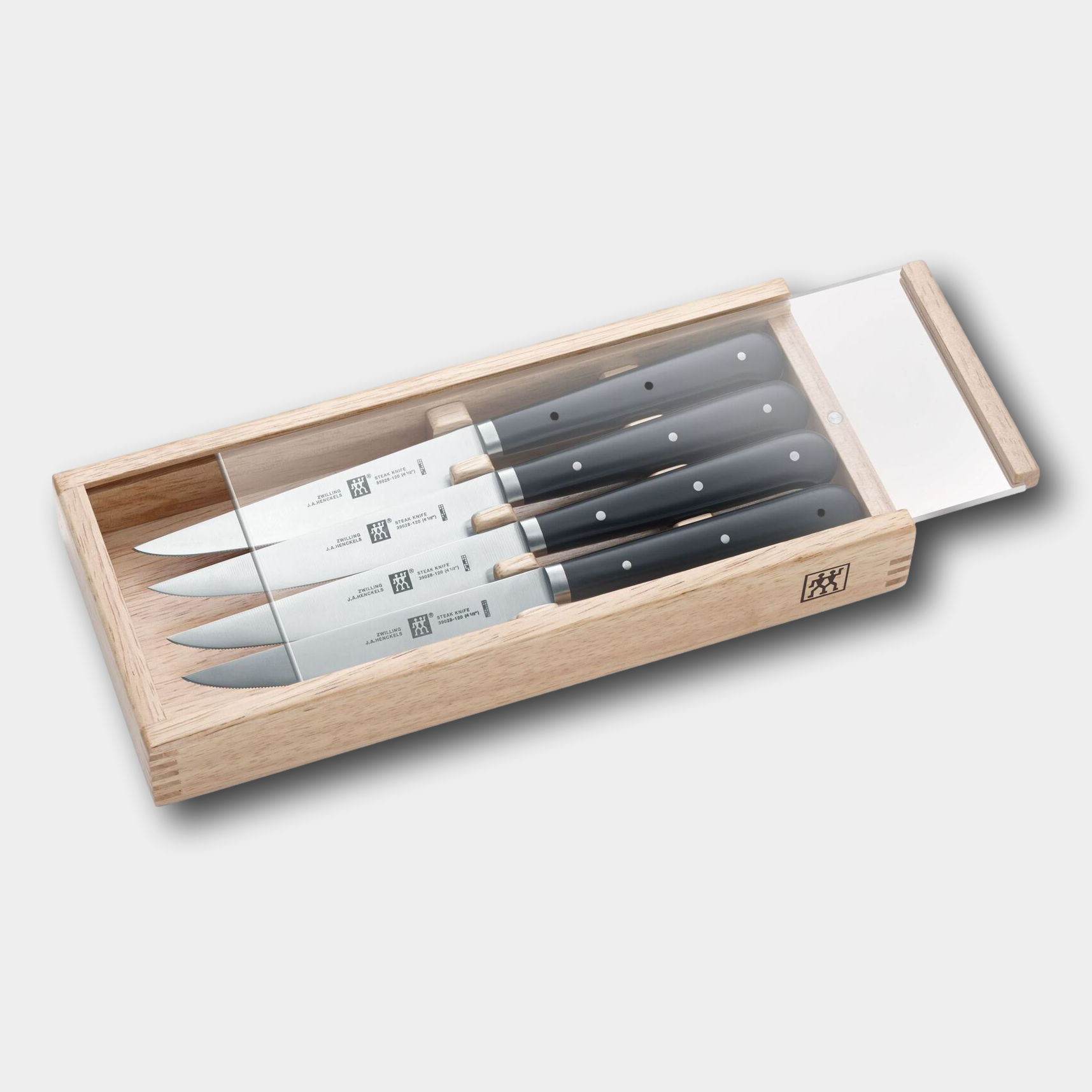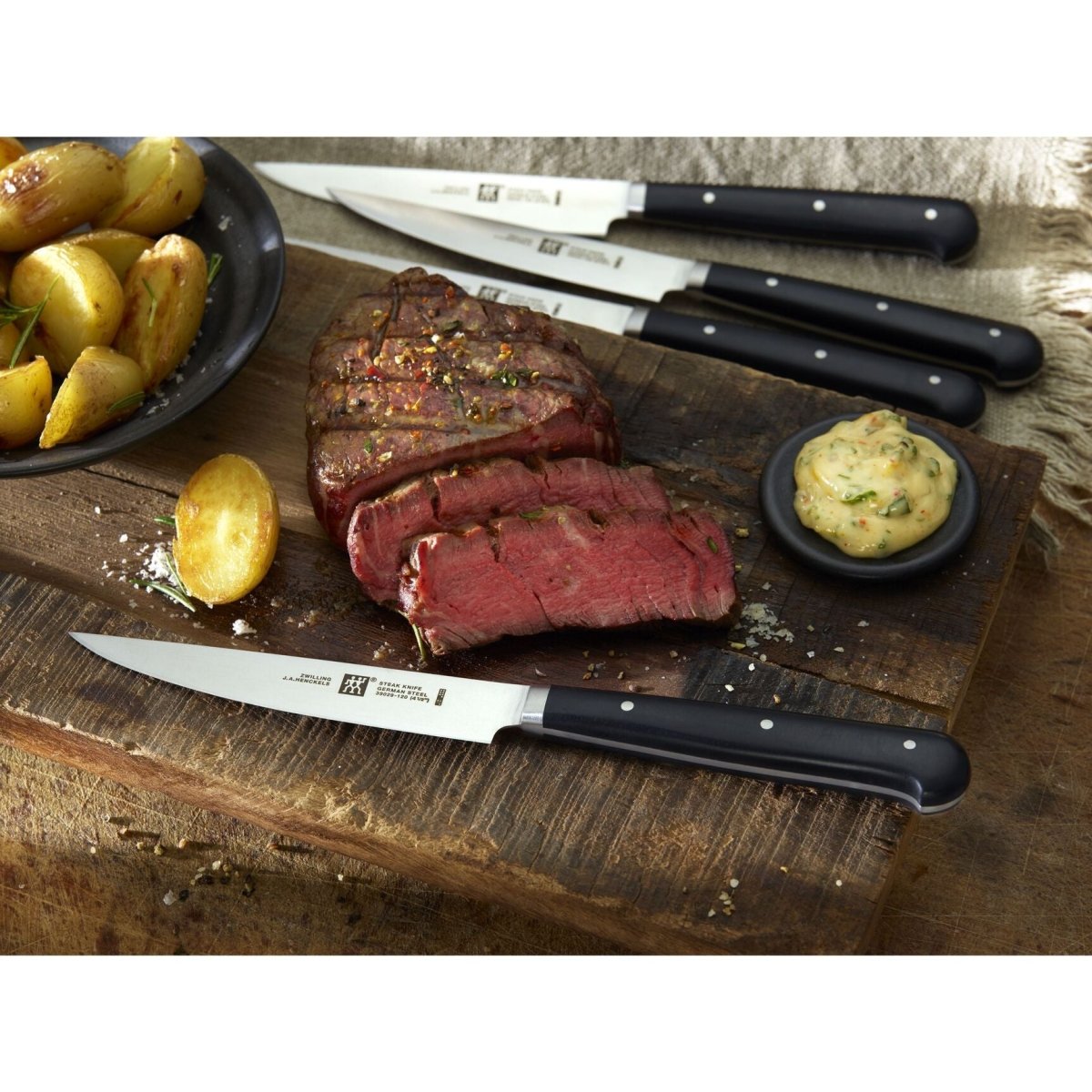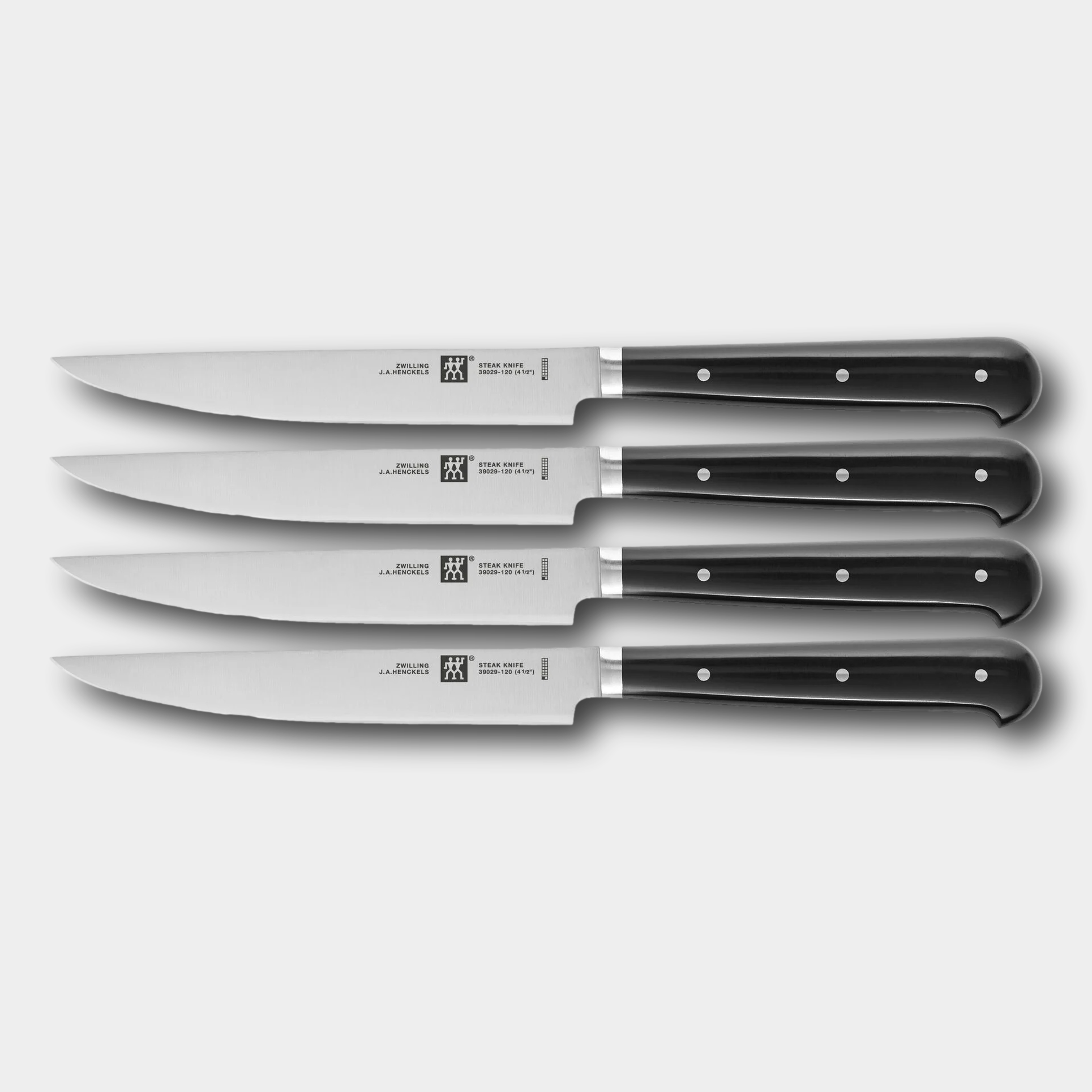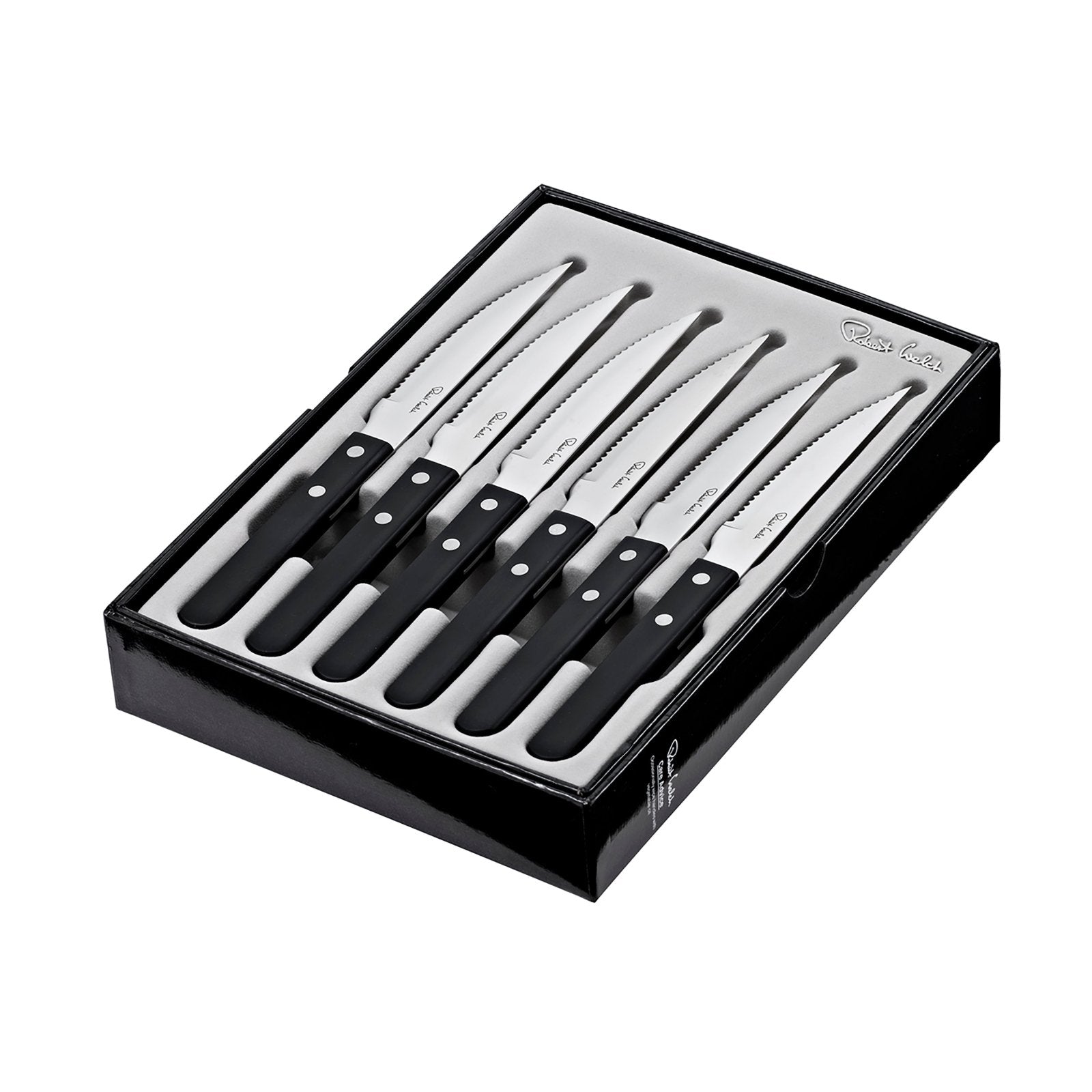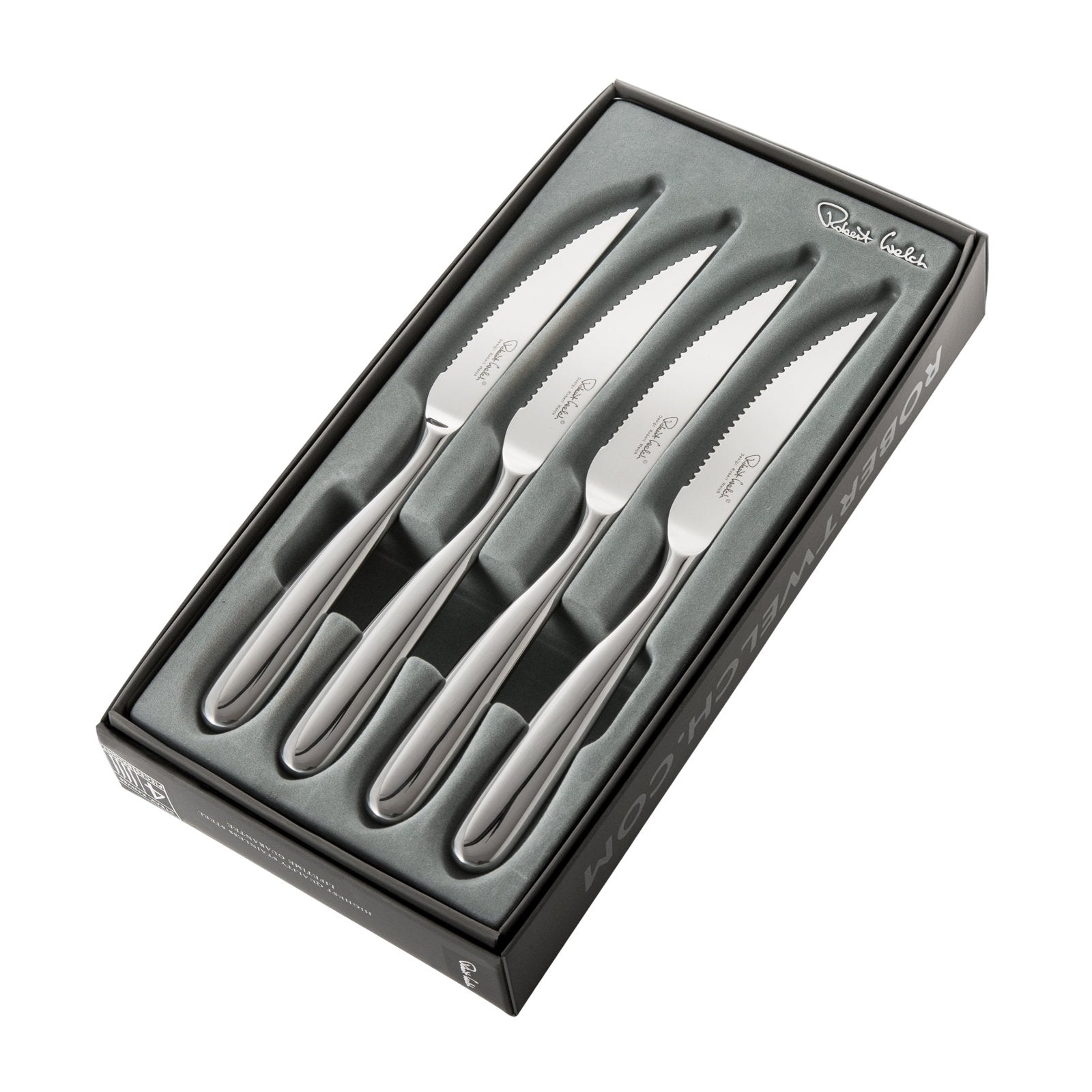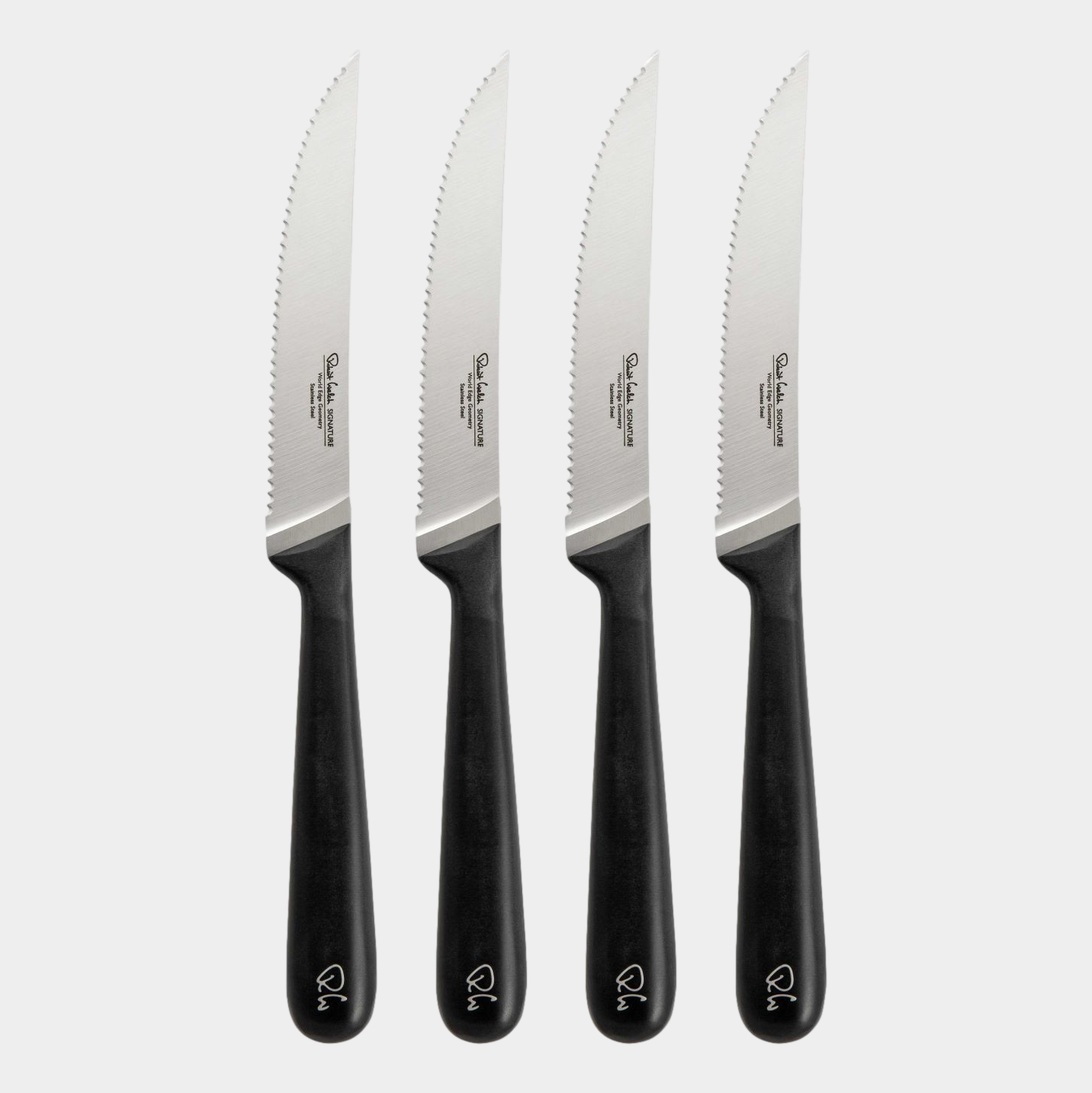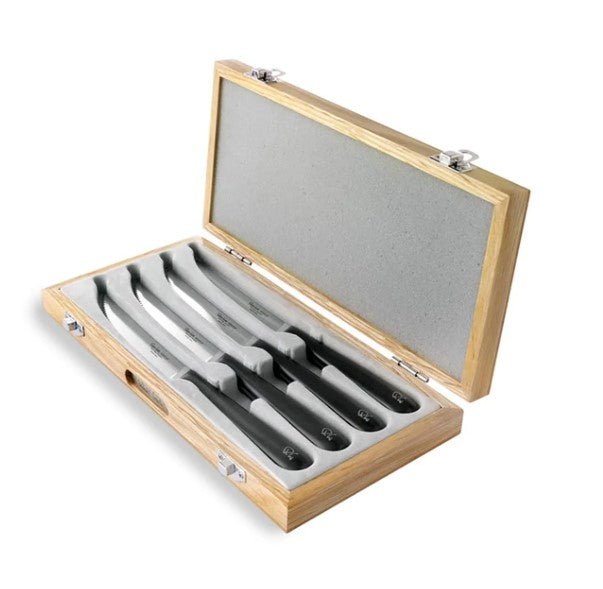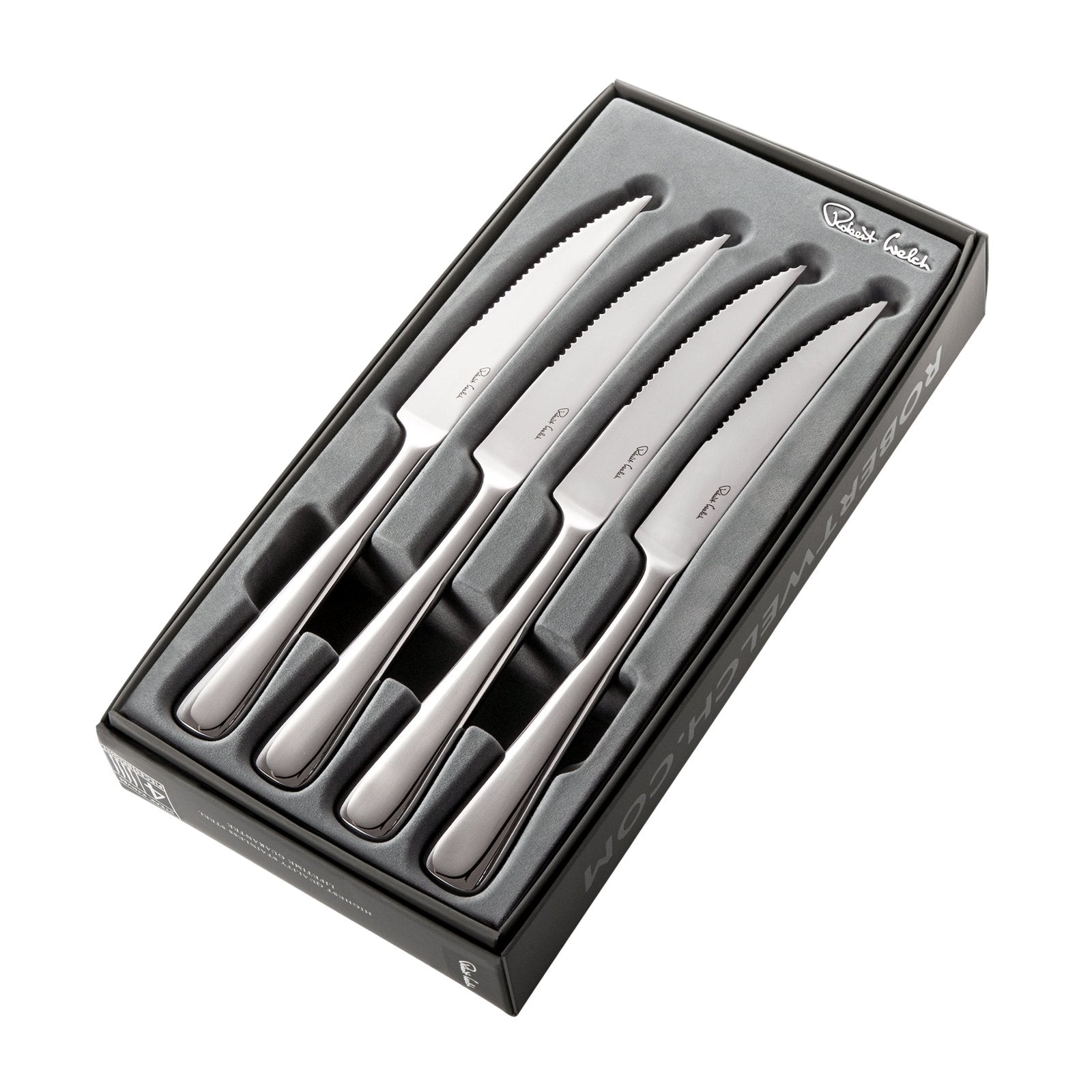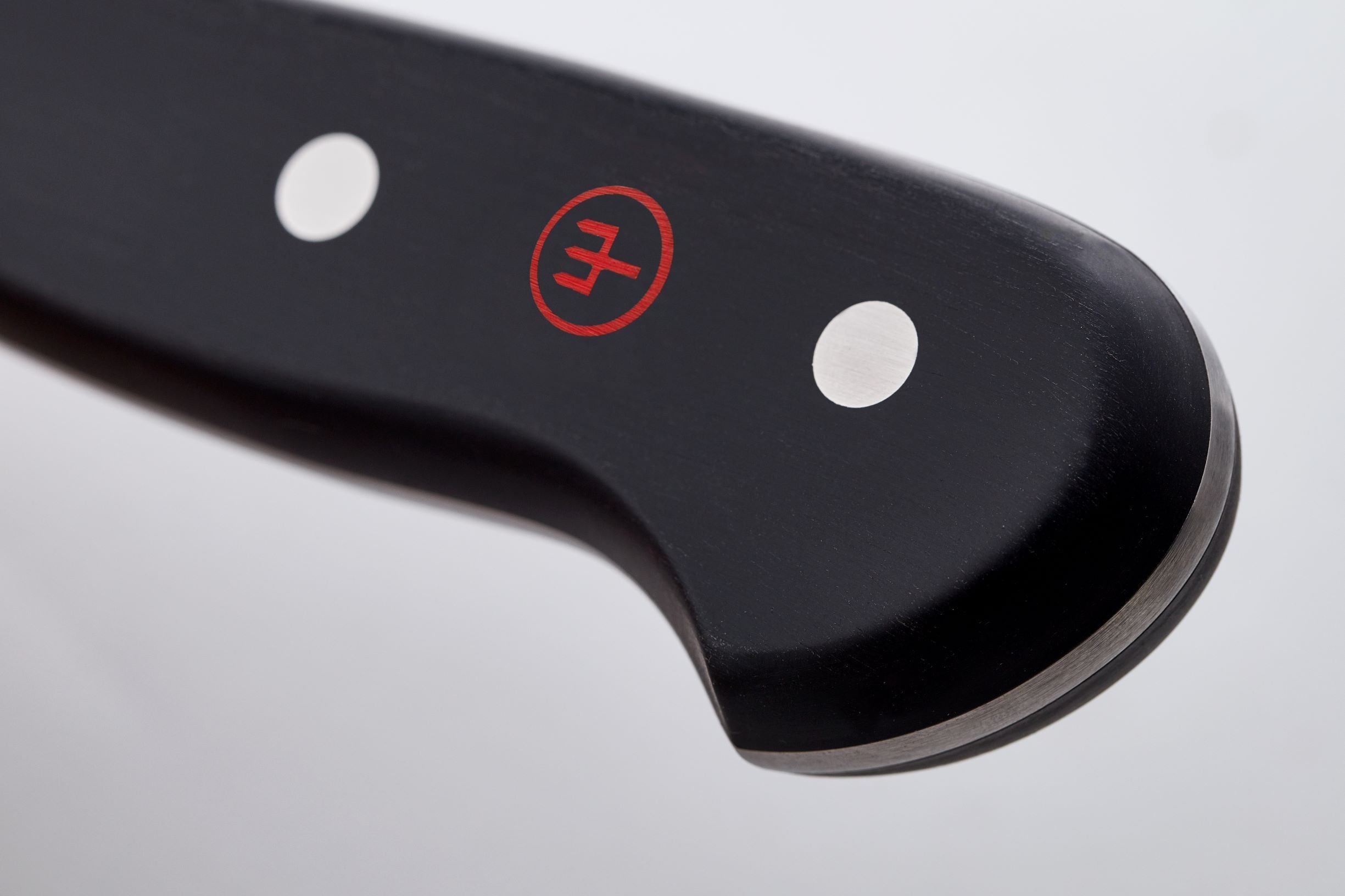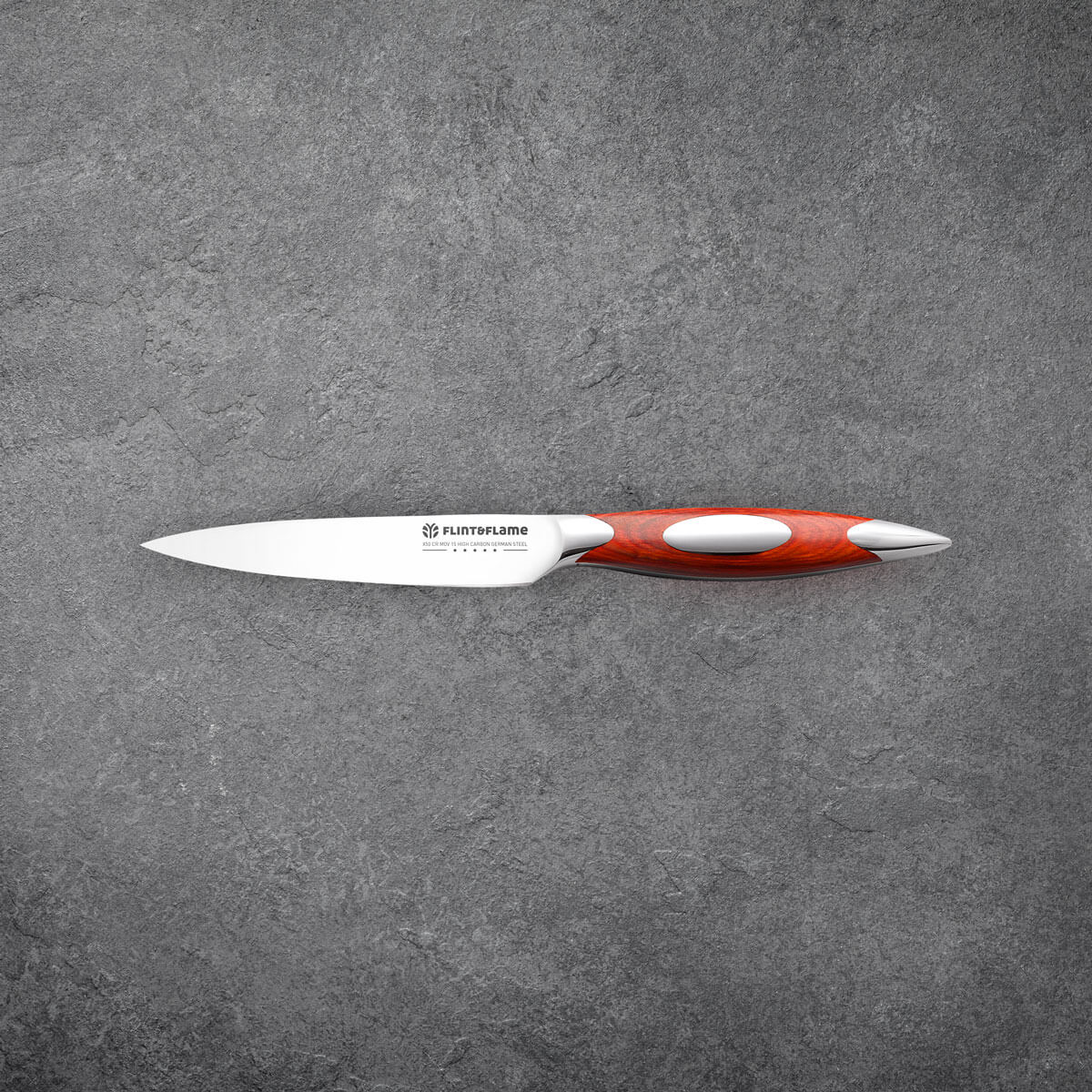
Steak Knives
Perfect Steak Knives For Effortless Dining
A high-quality steak knife is essential for effortlessly slicing through steaks, chops, and other cuts of meat, ensuring a clean, precise cut without tearing or crushing the meat. Our collection features a variety of serrated and straight-edged blades, designed for both practicality and style, so you can choose the perfect set to complement your tableware. Crafted with premium materials, our steak knives provide exceptional sharpness, durability, and balance, enhancing both everyday meals and special occasions. Whether you’re looking for a classic design or something more modern, we have a range of steak knives to suit your needs and elevate your dining experience.
- Renowned Brands:Featuring top names like Robert Welch, Wüsthof, Zwilling, Kai, and more.
- Express Delivery: If ordered before 2 pm we will dispatch it the same working day. Express delivery is available at the checkout.
- UK Support Talk to us, not a robot, we can advise and process your order over the phone


Wusthof Urban Farmer Steak Knife Set 4 Piece


ZWILLING® Steak Set - 6 Knives


Flint and Flame 5 inch Utility/Steak Knife
FAQs
Whether steak knives are better serrated or non-serrated depends on the type of dining experience and the kinds of meats you’re cutting. Both types have their pros and cons:
Serrated Steak Knives
- Advantages: Serrated blades are ideal for cutting through tougher or crusty exteriors, like grilled steaks or meats with a seared edge. The saw-like teeth can grip and tear through meat fibers without needing to be excessively sharp. Serrated knives also tend to stay sharp longer because the points of the serrations do most of the work, so they don’t dull as quickly as non-serrated knives.
- Disadvantages: Serrated knives can be less precise. This can result in a slightly messier presentation and more jagged slices, especially with more delicate cuts of meat.
Non-Serrated Steak Knives (Straight Edge)
- Advantages: Non-serrated knives provide cleaner, more precise cuts, which is ideal for tender steaks and meats. A straight-edged knife glides through meat smoothly, preserving the integrity of each slice and offering a more refined dining experience. These knives are also easier to sharpen and maintain over time.
- Disadvantages: Non-serrated knives tend to dull faster, especially if used on tougher or crusty cuts of meat, requiring more frequent sharpening to maintain their edge.
Which is Better?
- Serrated knives are better for cutting tougher meats or when you need a knife that requires less maintenance.
- Non-serrated knives are better for delicate or tender cuts of steak where a smooth, precise cut is preferred.
Those who take dining seriously tend to have both options readily available in their kitchen to ensure they cover all scenarios.
A steak knife typically has a blade length of 4 to 5 inches, but here's why that matters: it's long enough to slice cleanly through a juicy steak without feeling like you’re wielding a sword at the dinner table! A 4 to 5-inch blade gives you the perfect amount of leverage to handle even thicker cuts, while still being nimble enough for precise, elegant slicing. Anything longer would feel like overkill, and could feel a little cumbersome at the dinner table.
To cut raw steak, the best knife to use is a sharp high-quality chef’s knife. This versatile knife, typically 8 to 10 inches long, has a broad, sturdy blade that’s perfect for cutting through raw meat with precision. The sharp edge allows for clean, smooth cuts, which is essential for trimming fat, portioning steak, or slicing it for dishes like stir-fry or steak tartare.
For tasks like trimming silver skin or making more detailed cuts, a boning knife is also a good choice. Its narrow, flexible blade helps you manoeuvre around bones and separate meat from fat or connective tissue easily.
Using a sharp, high-quality blade is crucial when cutting raw steak to avoid tearing the meat and to maintain control over your cuts.
A steak knife should typically have a thin blade—ideally around 1.5 to 2.5 millimeters thick at the spine. The thinner the blade, the easier it is to slice through meat without tearing or shredding it. A thinner blade reduces friction when cutting, allowing for smoother, cleaner slices through both tender and tougher cuts of steak. On the other hand, thicker blades, tend to be stronger but also can crush or tear meat due to the larger surface area.
Shop at Cotswold Knife Company with confidence, knowing we are a verified stockist of all the knives we stock.

